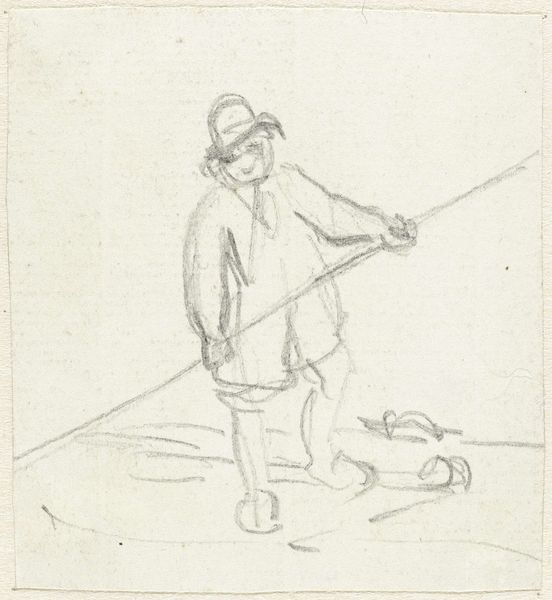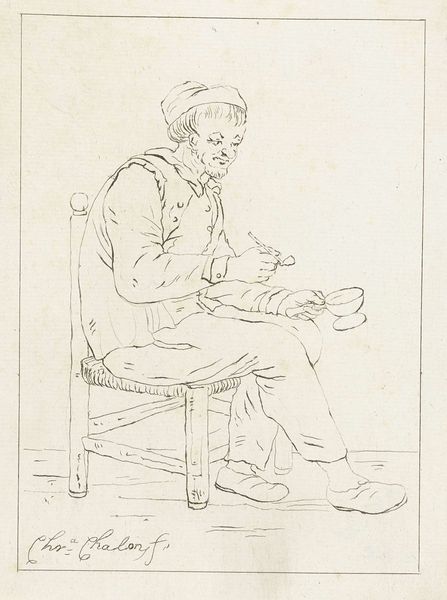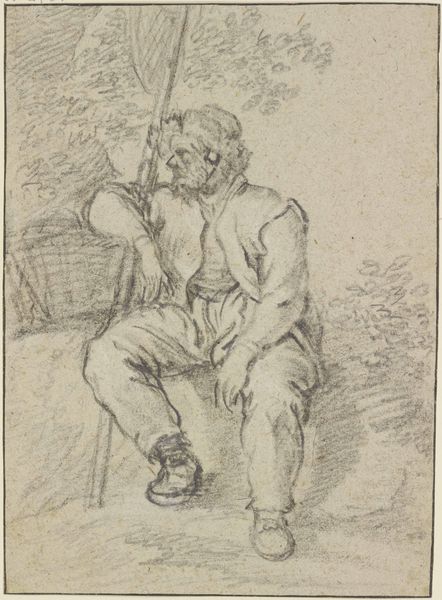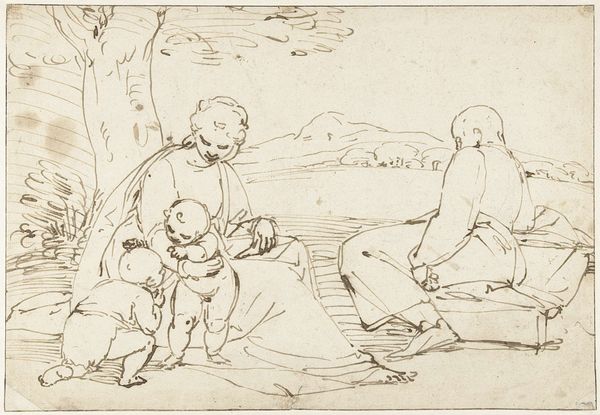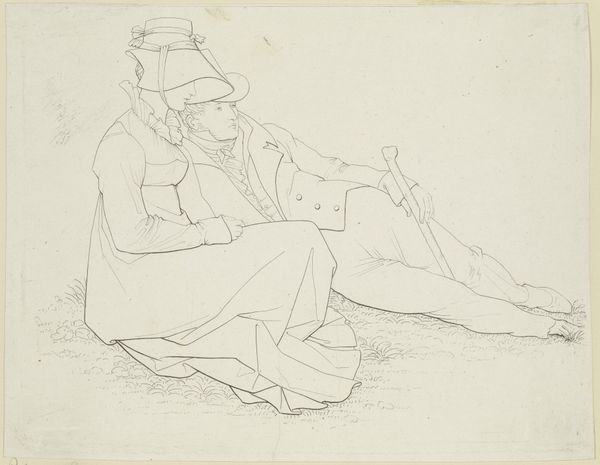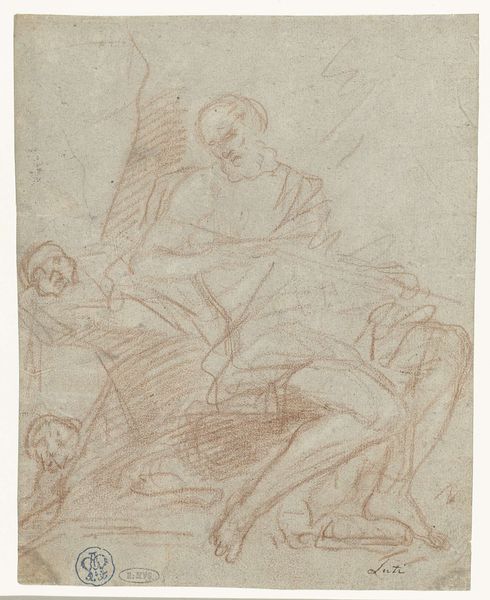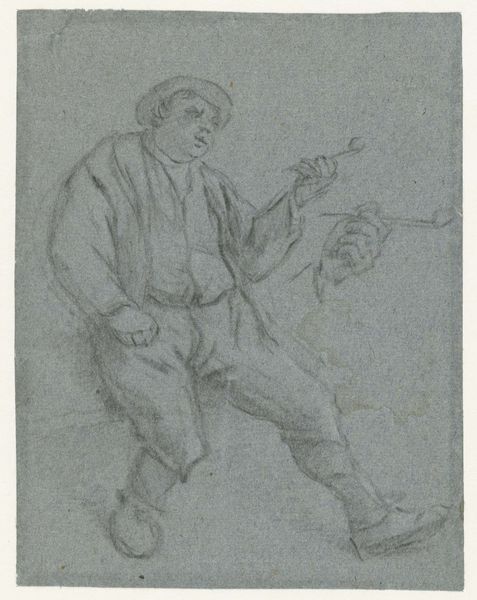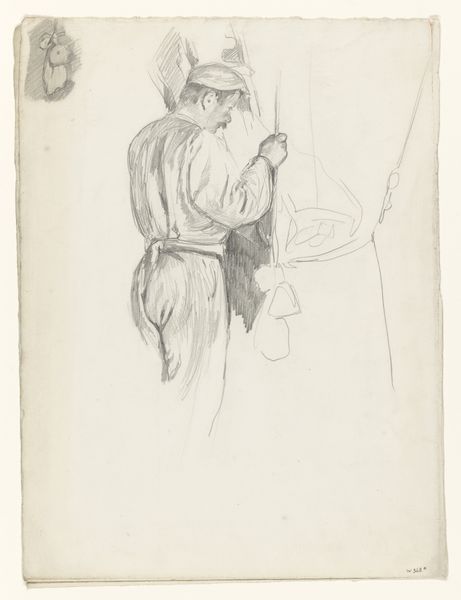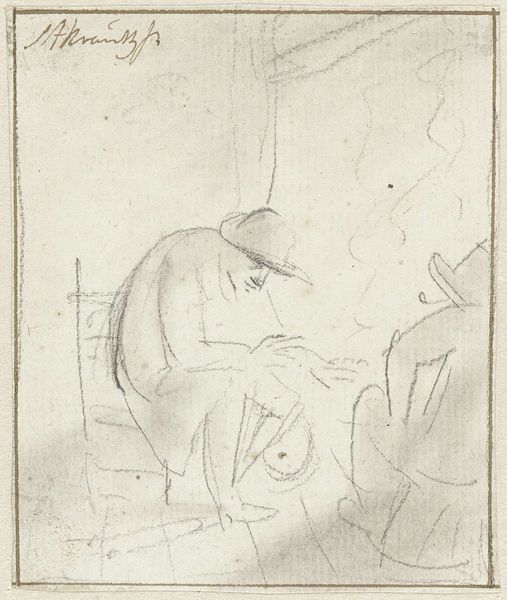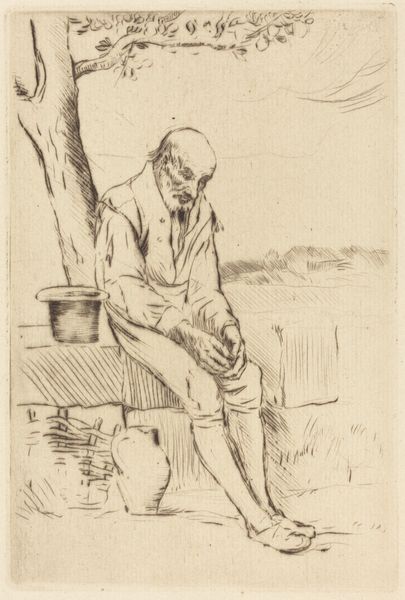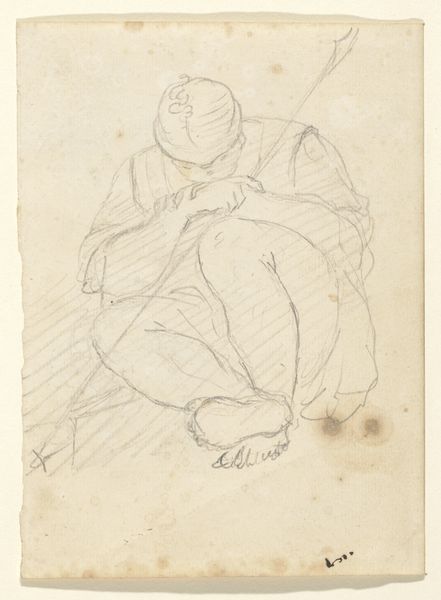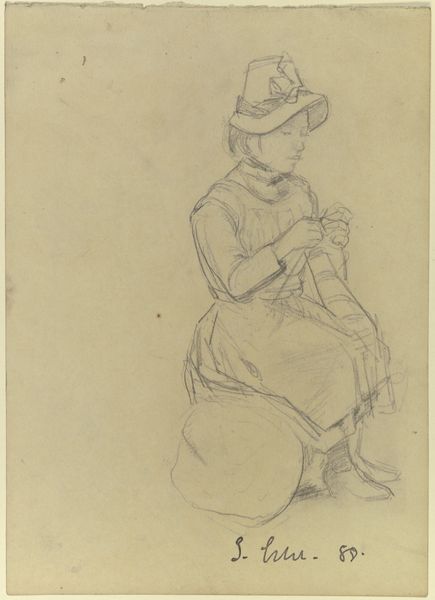
drawing, pencil
#
portrait
#
drawing
#
comic strip sketch
#
imaginative character sketch
#
figuration
#
personal sketchbook
#
idea generation sketch
#
sketchwork
#
romanticism
#
pen-ink sketch
#
pencil
#
line
#
sketchbook drawing
#
genre-painting
#
storyboard and sketchbook work
#
sketchbook art
#
realism
#
initial sketch
Dimensions: height 168 mm, width 131 mm
Copyright: Rijks Museum: Open Domain
Editor: This drawing, "Timmerman in zijn winkel," attributed to Simon Andreas Krausz and created between 1770 and 1825, shows a carpenter in their workshop. The sketch feels quite raw and immediate to me. How do you interpret this work, especially considering its historical context? Curator: This piece, while seemingly simple, offers a glimpse into the social fabric of the late 18th and early 19th centuries. Consider the role of the craftsman in society then. How did their labor intersect with broader power dynamics? Was craftsmanship viewed as a source of pride, or was it more closely associated with exploitation? The sketch offers an intimacy, no? But is that intimacy a reflection of reality, or a romanticized ideal? Editor: That's a compelling point. I hadn't considered the potential for romanticization. The details are sparse; could that be seen as a reflection of the artist's distance from the subject's lived experience? Curator: Precisely. The artist might be highlighting the dignity of labor but might also inadvertently reveal a separation between the observer and the observed. Where was this sketch created? Was it created to tell the truth of society, or as entertainment for a more elite set of viewers? We also have to consider access – who gets to depict whom, and whose stories are erased in that depiction? Editor: It's fascinating how much complexity can be unpacked from a simple sketch. I see now that looking at the historical context is not just about knowing the facts, but about understanding the power structures at play. Curator: Exactly. It is essential to engage with historical representations of the working class as potential vehicles for reinforcing particular ideologies. We must understand art's complicated entanglement within social and political structures. What have you learned? Editor: I see that appreciating the artistry goes hand in hand with a sensitivity toward social justice. This definitely made me think about images very differently!
Comments
No comments
Be the first to comment and join the conversation on the ultimate creative platform.
